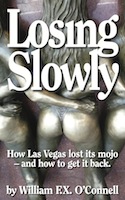A short history of creatively powered spaceflight
from the Niven Institute of Applied Plausibility
New students to the discipline of plausibility are often shocked to discover that it was only three centuries ago that humankind toiled — for years — toward the first breakthroughs in spaceflight. The novices look forward (perhaps without good cause for hope) to the day of a workable instantaneous spacedrive. Can we fault them for being unable to conceive of enormous “ships” that burned frozen atmosphere, moved at infinitesimal fractions of the speed of light, and were never capable of going anywhere worth being? The oldest people alive today have seen almost the entire history of plausibility mechanics, but the time before, necessarily, is implausible to us all.
And yet, it is plausibility mechanics that has caused this implausibility of our history! Even in the days of chemically powered spaceflight, humanity knew that the very best spacedrives were designed by science fiction writers. Unfortunately, the people of that distant age also believed that spacedrives were bound to the laws of physics. It was the discovery of the plausibility principle that delivered us from that grim prison, the recognition that “that which has the ring of plausibility to the untutored ear can be made to work.”
“The ring of plausibility” is, of course, the science fiction writer’s stock in trade. And even in the twentieth century, SF wordsmiths knew that “untutored” was a quality relative to the intended audience: Spacedrives that were thoroughly plausible in the period’s audio-visual amusements would never “fly” in print.
Our culture has carried untutoring far beyond the twentieth century’s breakthroughs in tax-funded ignorance, to the extent that we have been able to produce spacedrives long known to physicists to be quite impossible. The less intelligent among us are even able to take advantage of such ridiculously implausible tools as “inertialess” drives and “pressor” and “tractor” beams. Progress is not without its price, of course: Due to disruptions in the plausibility wave, only a few physicists and mathematicians are able to travel in plausibility-powered spacecraft. And those few, it goes without saying (but it does go with saying delicately), are not of the greatest luminosity.
At all events, it seems that it would be of benefit to both students and lay readers to revisit, at least briefly, the landmarks in the history of plausibility mechanics. Events that might seem to us immeasurably distant in time are in fact quite near. But it is true that they draw no nearer. And perhaps the novices are right: Perhaps we are approaching a true turning point, from which the events of the past will be lost to our view…
The Slower-Than-Light Drives
The electromagnetic constant remained a barrier to creatively powered spaceflight even after the plausibility principle was discovered. The problem, which we will run up against repeatedly, is that a voyage without duration cannot introduce interesting plot complications. Thus, while SF writers had toyed with the idea of faster-than-light travel for many decades before plausibility, few pursued it to consistently plausible designs. And, truth be told, the slower-than-light designs were plausible only by low-gravity leaps of faith.
The Bussard Ramjet — Uniquely among the designs discussed here, this one might actually have worked without plausibility mechanics. The ramjet, now either a sportsman’s toy or, most often, a museum piece, fuses hydrogen condensed from the dust of space, thus collecting its fuel as it travels. It takes advantage of relativistic time dilation to permit nearly-implausibly large populations of passengers to travel immense distances without dying of old age. Needless to say, the voyages are long enough to permit ample plot machinations, which is why the authors designed it in such great detail.
The Fusion Ships — These designs have been popular throughout the history of science fiction, but prior to the twenty-first century advances in untutoring, entirely too many people understood the delta-V equations to make fuel-bearing fusion ships plausible. Though its day in the sun was short-lived, two working fusion designs were actually perfected, the interstellar colony ship and the interplanetary mining vessel. The former carried what in earlier times would have seemed an implausibly large amount of mass at an implausibly high rate of speed. And the latter carried one or at most two passengers as quickly or as slowly as its creators deemed necessary for story events to unfold.
The Somewhat Faster-Than-Light Drives
These are the first true flowers of the era of plausibility mechanics, although they, too, owe their origin to the antediluvian epoch. There are two basic design-types, and both owe their existence to a comforting contradiction. If we are not bound by the electromagnetic constant, then why are we bound by any rate of speed? The answer, again, is this: If no time passes, no plot-events can take place. The science fiction writers here, as always, design for the needs of the story, and not of living passengers who happen to benefit later from their creations.
The Slightly FTL Drive — Moves at a multiple of the speed of light, often fractionally variable. Different designs have different inherent limitations. Some are unable to move while near a star or other large gravitational mass, while others can move from any point to any point (sometimes through “hyperspace”). Decadents who have allowed themselves to become addicted to a twentieth century video diversion known as “Star Chase” (or something like that) are able to move no faster than nine times the speed of light, except in dire emergencies when, for reasons best understood by themselves, they can move at ten lights (but no faster).
The Substantially FTL Drive — To date, only one design of this type has been perfected, the now nearly-forgotten Quantum Hyperdrive Shunt, created by the founder of this Institute. Though the name of the device cannot be translated into any intelligible form, its performance was impressive, traversing a light year in 1.2 seconds. Known colloquially as the “sneeze and you’ll miss it drive,” the Hyperdrive Shunt was never in widespread use, largely because it moved too fast to permit safe navigation.
The Instantaneous Spacedrives
The instantaneous drives represented a great stumbling block for their designers, the writers of science fiction. On the one hand, there was the problem of plausibly explaining speed limits, when the one that counts was already broken. On the other hand, there was the problem of how to motivate and change characters without story events transpiring through time. But they’re nothing if not inventive, and the authors came up with two general solutions: Find another type of speed limit, or don’t develop story during the voyage. These have resulted in three basic design-types.
The Quasi-Instantaneous Drive — Also known as the “plotcraft drive” or the “Crazy Eddie machine,” ships using this motive force move instantaneously from point to point. But the points they move from and to are very far removed from the points of origin and destination. The intervening distances are covered at sublight speeds using fusion drives. Consequently, voyages by this means can take almost as long as a relativistic trip in a ramjet, allowing as much story action to take place.
The Workably Instantaneous Drive — This design uses equations derived from Heisenberg’s uncertainty principle to move a ship reliably and instantaneously between any two points in space. It has the potential to open up the whole of the universe to mankind but for one fatal design flaw: It is plausible only to the Gunjii, a race of fastidiously hideous and very intelligent aliens.
The Chaotically Instantaneous Drive (Postulated) — Sometimes called the “baby bang drive,” this device proceeds from the “many worlds” interpretation of quantum mechanics. Given that we live in a universe in which a big bang has occurred, it is logical to surmise that the alternative to all big bang universes (more properly, space-time continua) is a universe which did not undergo the big bang. In theory, if a ship is inserted into the baby bang universe, then immediately escapes back into the universe of origin, it can travel previously implausible distances instantaneously, and at virtually no cost in energy. Unfortunately, this proposition remains unproved and may be unproveable. All points of the space-time continua are one in the baby bang universe, so the point at which the ship returns to the host universe is random in both space and time. “Get lost” takes on a whole new meaning…
The Faster Than Instantaneous Drives
These are sometimes called the “capitulation drives,” since they were developed after science fiction writers gave up on space travel altogether, recognizing finally that storycraft imposed a contradiction upon spaceflight that was impossible to resolve. As a consequence, there are only two FTI drives, and it seems likely that there will be no more (despite the hopes of our younger colleagues). The first is a cosmic joke, and the second a cosmic catastrophe.
The Somewhat Faster Than Instantaneous Drive — This device was created by a science fiction writer poking fun at the whole mess created by plausibility mechanics. It was useful to her in one light-hearted short story, but has since proved a boon to many a tottering septuagenarian, who know it by its more common name, “the fountain of youth drive.” A spacecraft employing this technology arrives at its destination in what seems to the passenger to be an instant, but in fact the ship has moved backwards in time. If the voyage was of five light years, arrival occurs five years prior to departure. Signally, the passengers are all five years younger (in bio-age) than when they left. Care must be taken that younger travelers do not cease to exist entirely, since the effect is irreversible. As a consequence, the only practical use of this drive is cheap “rejuvenation,” long-since plausible but more difficult and painful by other means.
The Suicidally Faster Than Instantaneous Drive (Postulated) — A further development on the above, this drive has not been (and probably cannot be) shown to work. Unique among spacedrives, it was created by a physicist, himself making fun of all the author-created drives. It assumes the oscillating state theory of astrophysics to move a ship backward in time through the big bang, back through the last big collapse, to a point in space-time corresponding to the point of origin, but in the cosmic epoch prior to this one. In other words, it moves an immense distance in time and space to arrive back at the exact place it began. This is impressive, if somewhat pointless. Unfortunately, there are other complications. First, since the ship does in fact collapse along with the rest of the universe to a primordial point-source, it arrives at its destination as randomized matter. Second, even if this problem could be plausibly overcome, the ship would have no way of communicating the success of its voyage, since the only direction it can move is backward in cosmic time (here defined as sequence), one oscillation per trip. And third, since the oscillating state theory employed implies inviolable “watchwork” causality for all entities, this drive renders plausibility itself hopelessly implausible and meaningless: If humans do not have free will, then both belief and disbelief are equally arbitrary states, subject to change by external events, but not by internal causation. The science fiction writers, for whom free will is necessary for both craft and coin, reacted to this design with vigor, and the inventor’s survivors have elected not to build a prototype.
Future Drives?
Alas, the prospects are grim. The Niven Institute knows of only one drive currently in development. It is an instantaneous device known officially as the “Workably Instantaneous Subspace Hypershunt” and unofficially as “the Dorothy and Toto drive” (after creator L. Frank Baum). In theory, a would-be traveler dons a pair of jeweled footgear, taps the heels together three times while asserting that “there’s no place like home.” Transportation takes place instantaneously at the third iteration of this incantation. Unfortunately, while quite cheap in energy and materials, the device has so far failed the test of plausibility. It may possibly work with subjects too young to ask, “Why should that work?” but, to date (and without intending to pun), no one has been able to motivate children that young. A breakthrough is hoped for in the science of untutoring, where pedagogues are attempting to use blunt instruments to reduce plausibility-age students to a pre-plausibility level of consciousness. Results have not been promising, but only time will tell.
For now, it looks as though we’re stuck with our two familiar stand-bys, the somewhat faster-than-light drives and the quasi-instantaneous ships. They’re slow but reliable, and they rob you of neither the hard-won years of your life, nor of life itself. If the time hangs heavy on your hands, you might read a book; a number of the science fiction classics are still in print, and they make fine reading. If I might presume to make a suggestion, pick up Poul Anderson’s Tau Zero. Now there was a ramjet with gumption! Incredible!










